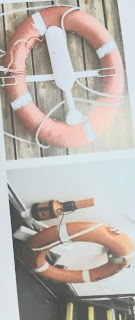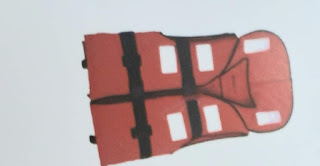#Information_may_concern you about maritime safety
Weather reserves:
In cases where the floating units may be exposed to danger as a result of bad weather, including sudden severe weather conditions, storms, strong winds, hurricanes and floods, plans for lifting and insurance of the units and evacuating their crews must be developed in an emergency. Have the following items as a minimum:
1 Describe the types of risks included in severe weather conditions that the units are likely to be exposed to and describe the steps that will be taken to provide protection against these risks.
2 The time frame for executing the plan (with the use of the remaining speedometers for the storm to reach the work site if it continues to blow at the speed and direction that was expected as a reference), including the estimated time for moving the unit to the safe harbor after the movement began.
3 The name of the safe location (the safe locations) and the distance and time required to transport equipment and supplies to a safe location.
4 The name of the vessel or vessels that will be used to transport any non-self-propelled unit, its types, capacity, speed and availability.
5 Readings of the river tide gauge, during which the floating units will be moved away from dams, river structures, etc., until they reach safe areas.
6 A list of the equipment and supplies used in the project and their ability to withstand adverse weather conditions.
Means of securing equipment and supplies that will not be moved.
* The extended movement of the marine units and their tugs must be preceded by an assessment of the reports and weather conditions by a responsible person to ensure that the safe movement of the unit and tugboat can be achieved.
Work orders or operation must be preceded by an assessment of reports and weather conditions by a responsible person to ensure that safe working conditions and safe havens exist for individuals.
USCG-approved personal buoyancy devices (V, III, II, and I) must be worn by all personnel working on deck exposed to severe weather conditions, regardless of other safety measures used.
A sufficient number of boats of suitable sizes and statistical capabilities must be provided with the design, equipment and preparation of each of them to carry out traction tasks, provided that they are available at all times to move both self-propelled and non-self-propelled units in the face of tides, currents and winds in severe weather.
Contractors working on exposed offshore sites are required to monitor NOAA marine weather forecasts, as well as use local commercial services to forecast the weather as available.
Floating units will not work at the entrances to open or exposed canals or waterways that are exposed to known changes in the state of the sea so that these changes may exceed the units' rental validity.
*.* protection of the marine environment :_
The Arabian area is considered a very sensitive area environmentally , so it is very important that it is protected , on agust 2008 it was internationally declared that the gulf area is a special maritime area , and it is forbidden to throw oil or trash in the water , we should keep the gulf area clean to protect our fish resources and to protect ourselves from the trash that our fish may eat , which we would then consume .
Some boats may harm the environment simply by throwing trash into the sea as some of it can remain for years without decomposing , the time it takes for the material to decompose in the sea
Paper = 2-4 weeks , cotton cloth =1-5 months , Ropes = 3-14 months , wool cloth =1year , painted wood = 13 years , tin can = 100 years , aluminum can = 200-500 years , plastic bottle= 400 years
Oil pollution :
The international agreement for the prevention of marine pollution ( Marpol 73/78 )
Forbids ships from throwing oil into the sea . One ton of oil pollution can cover 12km2 of the seas surface .oil pollution moves at 3% of the wind speed , and it can move to 300 km distance from the source of pollution .














